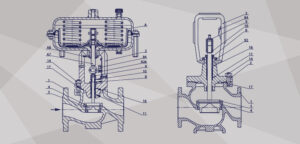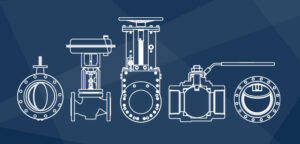
Valve Glossary
A reference tool to help users understand and clarify the meaning of specific terms and concepts within world of valves.

A reference tool to help users understand and clarify the meaning of specific terms and concepts within world of valves.

For consistency amongst manufacturers, valves are designed to meet established standards. These standards are set for valve performance, design, materials, and functionality. This article aims to cover the organizations responsible for establishing standards in valve manufacturing, along

Valves come in all sorts of shapes and sizes. This is also true with the parts that make up these valves. These components can be sorted into 4 main categories, with two of them being subcategories. Non-Pressure

What is a Valve? A valve is a device that regulates the flow of gases, liquids, or loose materials through an aperture, such as a pipe, by opening, closing, or obstructing a port or passageway. Valves perform

Valves have come a long way from their beginnings, almost 2000 years ago. Technological advancements and human knowledge have continuously allowed new and improved designs to emerge in the valve industry. Technological advancements are paired with the
CGIS is the global supplier of the highest performance valves and automation. With over 40 years of experience, CGIS is committed to understanding the application and ensuring customers always get the right valve.